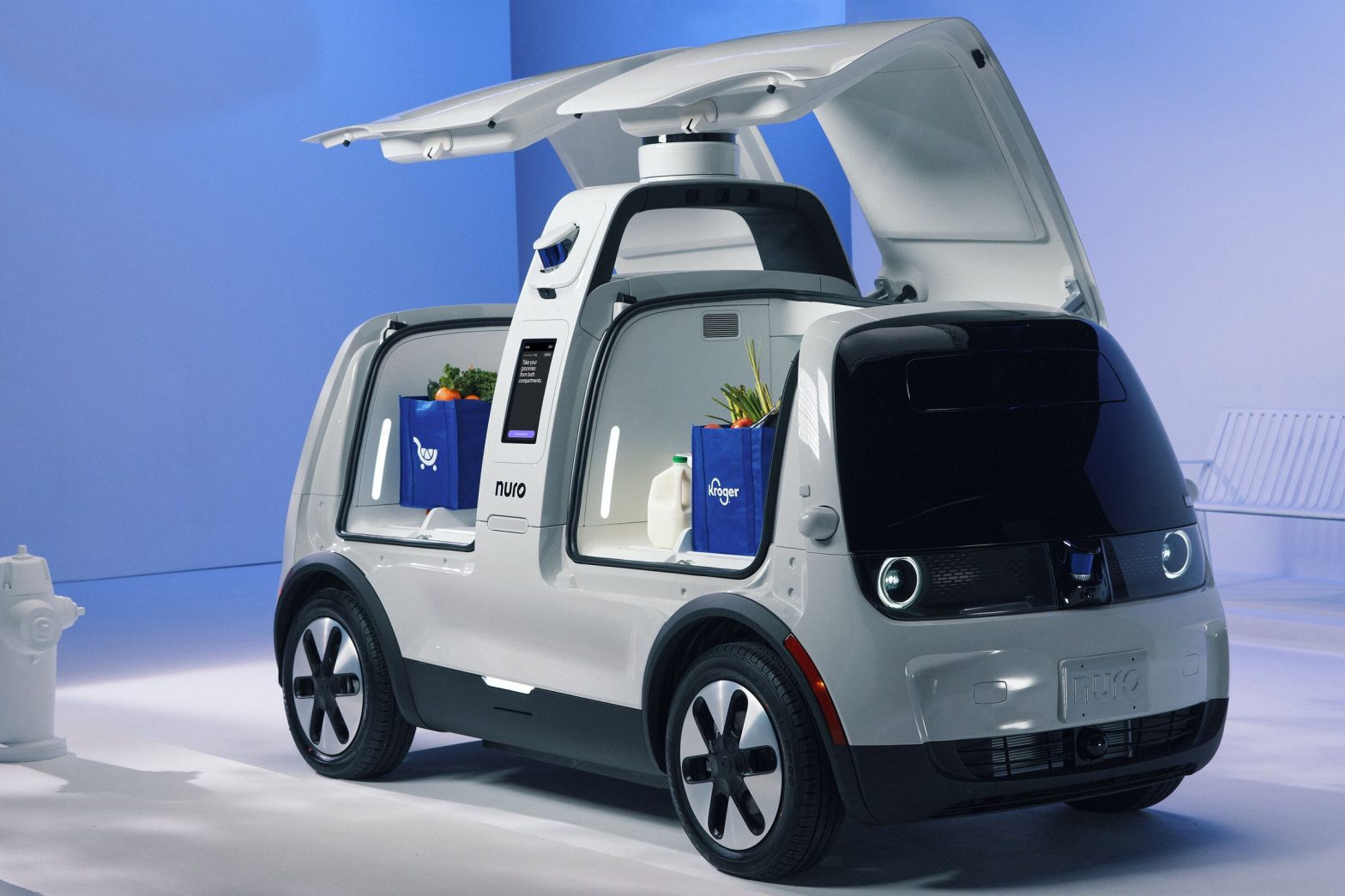/
The robot delivery company will use Arm’s automotive tech for greater power efficiency and a lower cost for scaled manufacturing.
Share this story
:format(webp)/cdn.vox-cdn.com/uploads/chorus_asset/file/23161324/Hero_Image_2__Nuro_Groceries.jpg)
Delivery robot company Nuro is reaching out to chip designer Arm for help developing its third-generation vehicle, the companies announced today. The partnership is expected to enhance the capabilities and range of Nuro’s electric-powered robots as well as fast-track the production and commercialization of the company’s delivery service.
The Nuro Driver, which is the company’s branding for the hardware and software needed to power one of its autonomous delivery vehicles, will use Arm’s Automotive Enhanced technology. That’s the chip designer’s branding for the portfolio of intellectual property “dedicated to the safety and specialized computing needs of the automotive market,” Arm says.
The news of the partnership comes at a perilous time for autonomous vehicle developers. Companies are facing new questions about safety following several incidents in which people were injured by driverless vehicles. Investment has also dwindled as timelines have stretched further into the future. Last spring, Nuro said it would lay off 30 percent of its employees in order to cut costs.
Nonetheless, the company is forging ahead on its third-generation R3 vehicle, which is supposed to have twice the cargo space as the second-generation R2 robot. It will also include modular inserts and new temperature-controlled compartments to keep food warm or cold, depending on the need.
Nuro has been working with Arm for years but is announcing its plans today to “deepen” that relationship by relying on some of the company’s core technology to provide a foundation for its new vehicle, said Nuro chief technology officer Andrew Clare.
:format(webp)/cdn.vox-cdn.com/uploads/chorus_asset/file/23161328/Nuro_Kroger_Employee.jpg)
By teaming up with Arm, Nuro is also hoping to improve the efficiency and range of the R3 robot by up to 20 percent without changing the size of the vehicle’s battery, Clare said. Arm’s technology runs on very low power, freeing up more electrons for Nuro’s AI-powered “brain,” which makes real-time decisions regarding operation and safety of the vehicle while on the road.
“We create the lowest power performance technology,” said Dipti Vachani, senior VP and general manager for Arm’s automotive business, in an interview, “so that Nuro can then take advantage of all that AI software.”
Nuro was founded in 2016 by Dave Ferguson and Jiajun Zhu, two veterans of the Google self-driving car project that would go on to become Waymo. It is one of the few companies operating fully driverless vehicles — that is, vehicles without safety drivers behind the wheel — on public roads today.
Nuro’s current fleet of vehicles, which operates in California and Texas, has traveled over 1 million miles autonomously. While the software stack will run using Arm’s technology, Nuro’s powertrain — electric motors and batteries — is developed by China’s BYD. Nuro is also building a facility in Nevada, where it will manufacture its next-generation vehicles.
But the company was also forced to put its commercial expansion on pause and delay production of its R3 vehicle last year as it dealt with cost issues. Nuro’s co-founders said they were focused on a “leaner model for AV development” that would allow the company enough money for three and a half years of operation.
Since then, Nuro says it has been conducting small scale commercial pilots with some of its partners and is planning for the expansion of our delivery service in the coming years. “Deploying Nuro R3 on public roads later this year is an important step in our path to commercial scale,” Nuro spokesperson Sarah Eno Henderson.
Clare said that Nuro is already beginning to think beyond delivery to include applications like passenger vehicles. But that delivery remains its core focus at the moment — which is why the Arm deal is so important.
“We are developing in the next generation Nuro driver, which is our next generation sense and compute stack, that again provides this increase in power efficiency, this lower cost point,” Clare said. “And that’s what will enable us to scale this product to mass production.”
